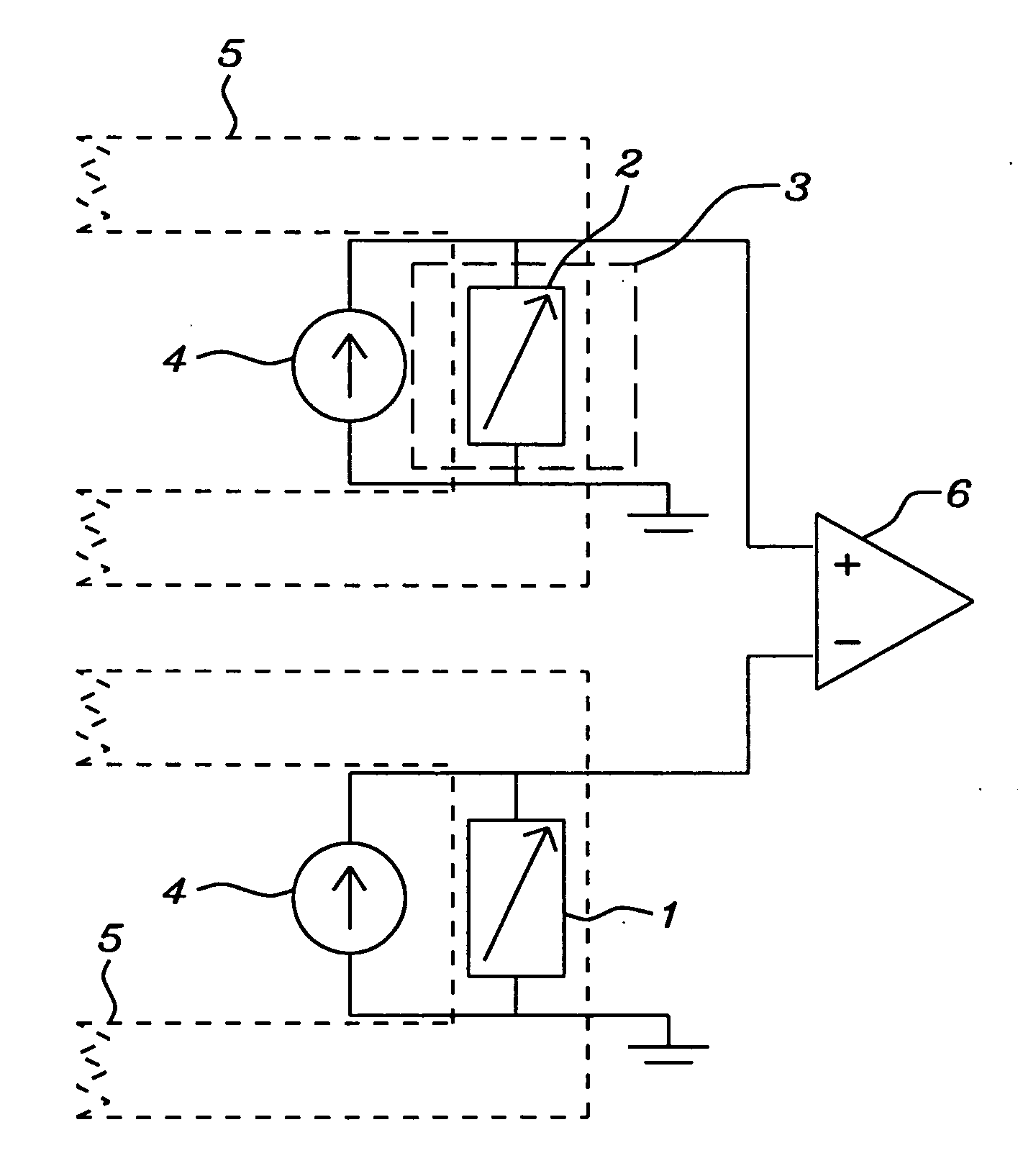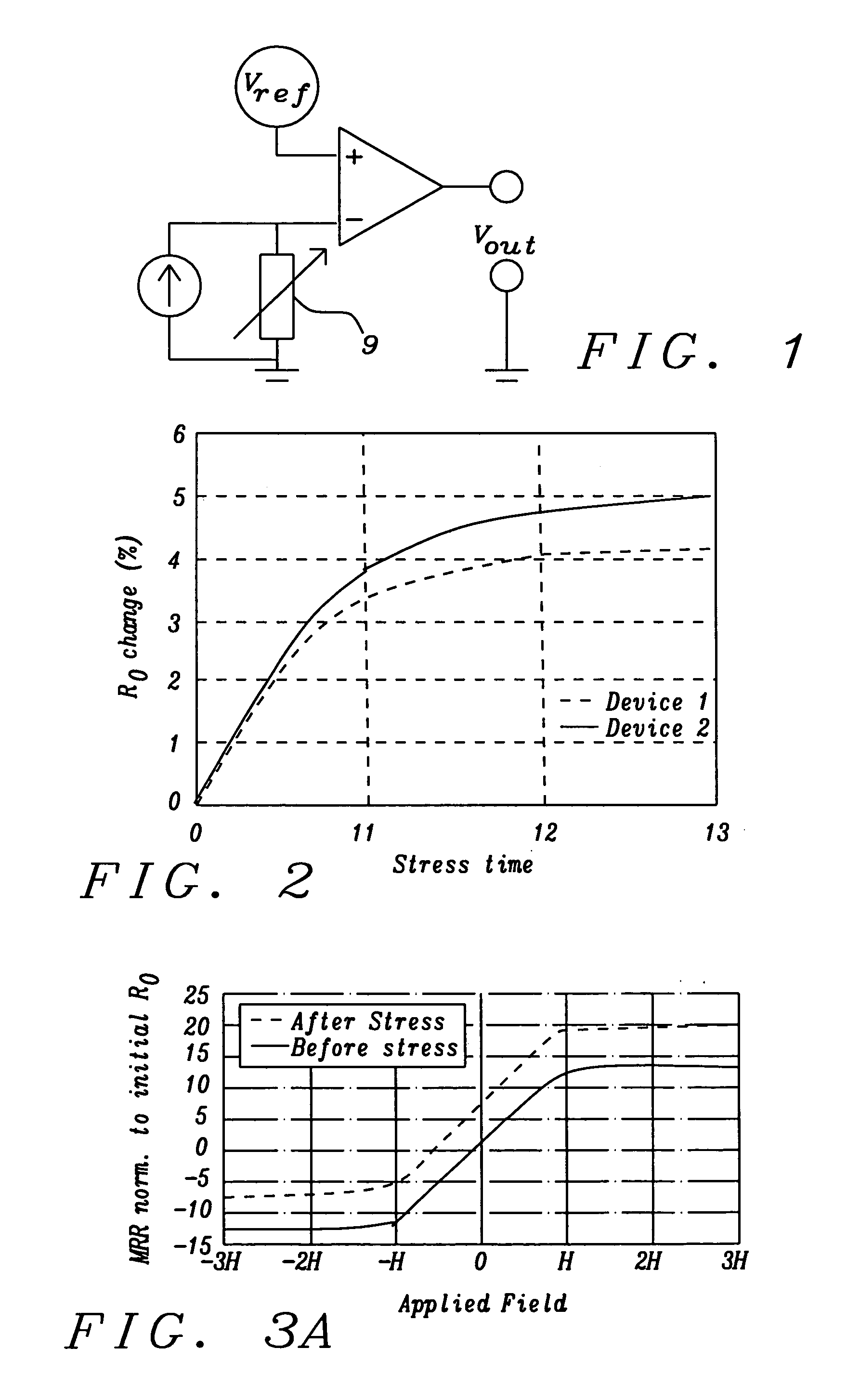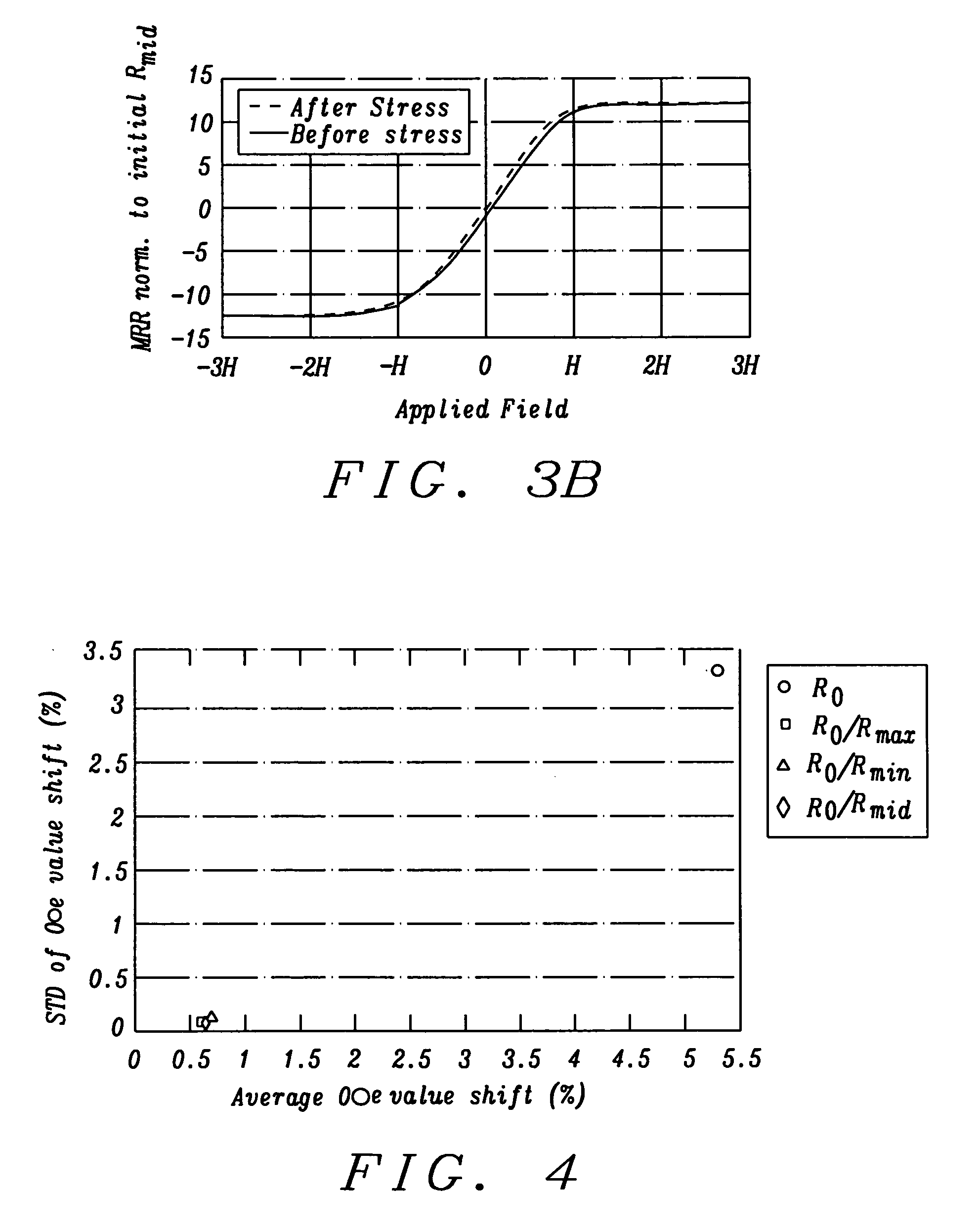Open loop magneto-resistive magnetic field sensor
a magneto-resistive magnetic field and sensor technology, applied in the field of magnetic measurements, can solve the problems of long-term resistance shifts over time, limited circuits such as those shown in fig. 1, and the accuracy of open-loop schemes such as the one seen in fig. 1 will surely suffer over time, so as to improve the accuracy of two-sensor field measurement methods.
- Summary
- Abstract
- Description
- Claims
- Application Information
AI Technical Summary
Benefits of technology
Problems solved by technology
Method used
Image
Examples
embodiment 1a
Approach 1
[0042]The basic elements of the device are MR sensor 1 for sensing the unknown magnetic field and MR sensor 2 for providing a zero-field reference point for sensor 1. Magnetizing coil 5 (as shown in FIG. 5) is located in close proximity to sensors 1 and 2 and produces a magnetic field at sensors 1 and 2 when coil 5 is energized by passing an electric current through it.
[0043]A more compact version of the apparatus is schematically illustrated in FIG. 6 where the predetermined magnetic field is generated by passing current through a single wire. By using thin film technology, a circuit line of this type can be located within a range of from 5 to 100 nm of both MR sensors. Additionally, said circuit line can be placed directly above, directly below, or between the two MR sensors and any microprocessor needed to compute and store data generated by the sensors can be formed at the same time.
[0044]Sensor 2, and the section of coil 5 that affects sensor 2, are shielded by magnet...
example
Referring to FIG. 5
[0046](1) Coil 5 drives both sensors 1 and 2 into saturation to generate R1max and R2max.[0047](2) Separate current sources 4 are connected to each sensor and adjusted so that Vo is dropped across each sensor.[0048](3) Without changing the current levels through sources 4, coil 5 is de-energized.[0049](4) The voltage dropped across sensor 2 is now given by V20field=(R20field / R2max)V0 since sensor 2 does not see the external field.
[0050](5) The voltage dropped across sensor 1 is now given by V1field=(R1field / R1max)V0 [0051]If sensors 1 and 2 share a common substrate, then
R10field / R1max=R20field / R2max
So, [sensor1voltage−sensor2voltage]=(R1field−R10field)V0 / R1max (1) which is the reason for the comparator.
[0052]Note that while aging may change any or all of R1field, R10field, and R1max individually, the ratio expressed in equation (1) remains constant.
[0053]Sensor 1 and 2 can be any magneto-resistive sensor that has at least one magnetic free layer whose magnetizat...
PUM
 Login to View More
Login to View More Abstract
Description
Claims
Application Information
 Login to View More
Login to View More - R&D
- Intellectual Property
- Life Sciences
- Materials
- Tech Scout
- Unparalleled Data Quality
- Higher Quality Content
- 60% Fewer Hallucinations
Browse by: Latest US Patents, China's latest patents, Technical Efficacy Thesaurus, Application Domain, Technology Topic, Popular Technical Reports.
© 2025 PatSnap. All rights reserved.Legal|Privacy policy|Modern Slavery Act Transparency Statement|Sitemap|About US| Contact US: help@patsnap.com



